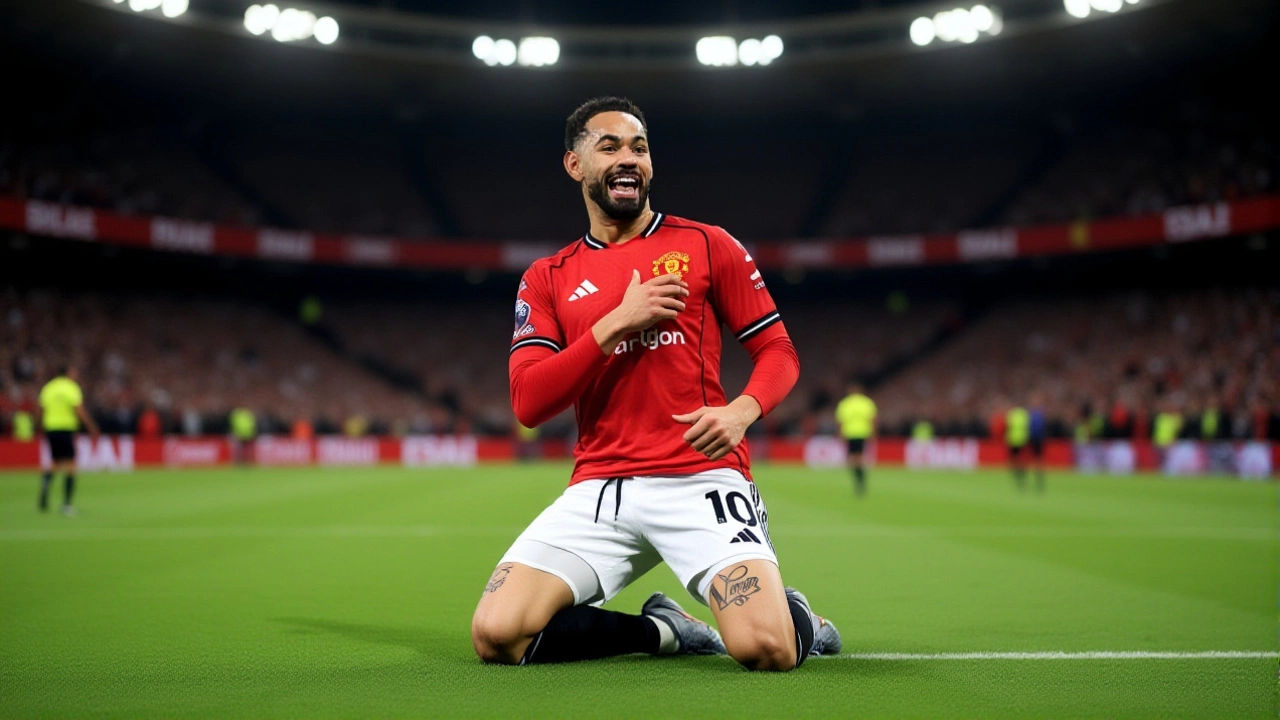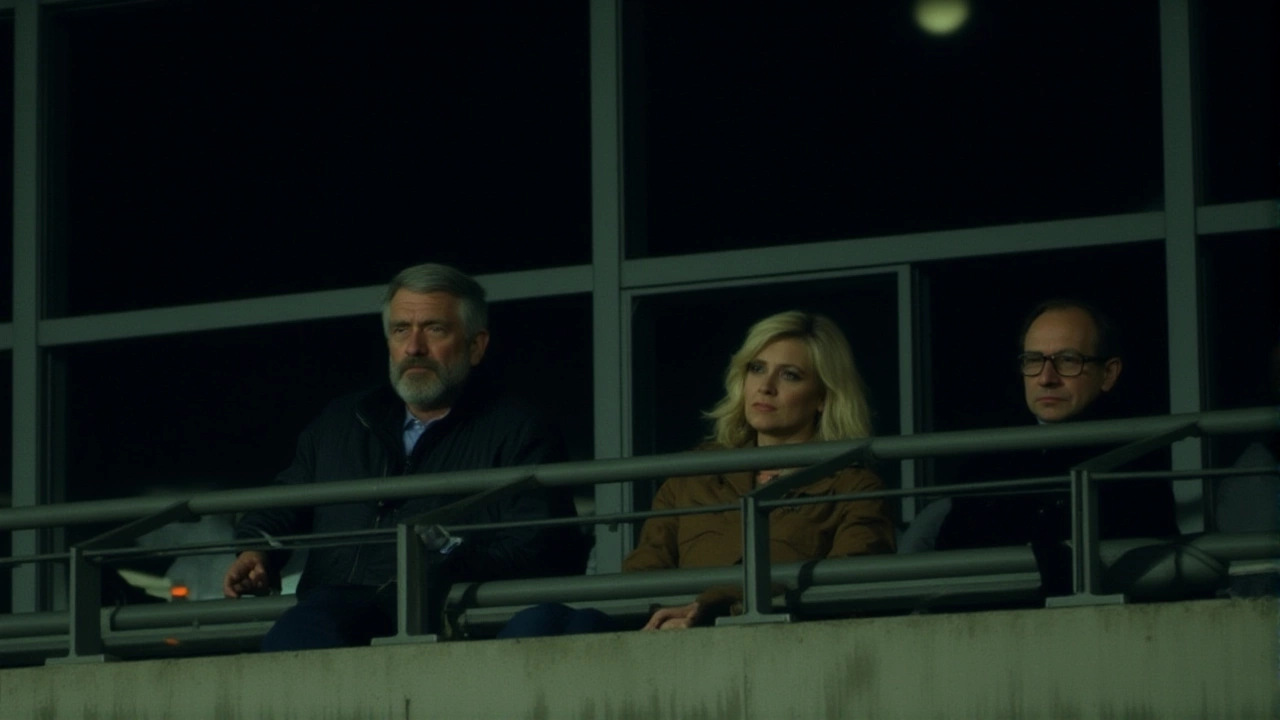When Sir Jim Ratcliffe, chairman of INEOS Group announced that OGC Nice is officially on the market, the football world sat up straight. The revelation came in a Football365 report published in 2024, which also disclosed that an asking price—rumoured to sit in the €200‑250 million range—has already been set. Why does this matter? Because Ratcliffe’s attention has now narrowed to a single, far bigger prize: the Premier League giants Manchester United.
Background: Ratcliffe’s Football Portfolio
Ratcliffe first dipped his toe into European football by buying Swiss side Lausanne‑Sport in 2017 through INEOS. Two years later, he acquired French Ligue 1 club OGC Nice from Chinese‑American entrepreneur Chien Lee. The Nice purchase was meant to be a stepping‑stone, a way to learn the ropes before tackling English football.
That ambition resurfaced after the 2022 Russian invasion of Ukraine forced Russian oligarch Roman Abramovich to sell Chelsea FC. Ratcliffe threw in a £4.25 billion bid—fastest‑ever in English top‑flight history—but the offer was rejected in favour of Todd Boehly’s consortium. Undeterred, he set his sights on Manchester United, a club he grew up watching.
In January 2023 INEOS formally entered the bidding process after the Glazer family announced a potential sale. After a prolonged tug‑of‑war, Ratcliffe secured a 25 percent stake on 24 December 2023; the transaction closed in February 2024, granting him control over all sporting matters at Old Trafford while the Glazers retained majority ownership.
Recent Developments: The Decision to Sell Nice
The Football365 piece makes it clear that Nice has been "largely ignored" as Ratcliffe poured resources into Manchester United. A club‑financial analyst quoted in the report noted: "In super‑simple terms, Nice has been spending more than it earns for the last seven years, and the cash‑flow gap is growing." The same analyst warned that United itself could run out of cash by the end of 2025 if the current spending trajectory continues.
With that backdrop, Ratcliffe’s latest move—listing Nice with an explicit asking price—signals a strategic pivot. The French side, owned 100 percent by INEOS, will likely fetch a buyer willing to match the €200‑250 million estimate, according to insiders who spoke on condition of anonymity.
Why now? The answer lies in the Premier League's financial calendar. United’s fiscal year ends on 31 July, and the club’s directors are already cranking up budgeting for the 2025‑26 season. By shedding Nice, Ratcliffe can free up capital, reduce the complexity of managing two clubs on different continents, and concentrate on stabilising United’s finances.
Stakeholder Reactions
Fans of Nice reacted with a mix of disappointment and hope. A supporter group posted on Twitter: "We love Sir Jim’s investment, but we deserve a club that fights for us every day, not a side‑project." Meanwhile, Nice’s board released a brief statement acknowledging the “potential change in ownership” and pledging to "ensure a smooth transition for players, staff, and supporters."
Manchester United insiders were more pragmatic. Former United finance director David Gill told the BBC that "the sale of Nice could give Sir Jim a clearer runway to inject fresh equity into United, which is critical given the club’s current cash burn."
Even the Glazer family seemed relieved. In a rare public comment, they said, "We welcome any move that helps secure the club’s long‑term stability and competitiveness."
Financial Implications for Both Clubs
- Nice’s last audited accounts (2023) showed a €95 million operating loss, with wage bills outpacing revenue by €30 million.
- United’s 2023‑24 accounts projected a £350 million deficit if spending continues at current levels.
- An estimated €220 million sale of Nice could free up roughly £180 million after tax, providing Ratcliffe with additional equity to shore up United’s balance sheet.
- INEOS would still retain a strategic foothold in European football, preserving potential future partnerships or resale opportunities.
Analysts from Bloomberg note that the sale could also improve Ratcliffe’s credit metrics, making it easier for INEOS to secure financing for United’s planned stadium upgrades at Old Trafford.

Future Outlook: What’s Next for Nice and United?
For OGC Nice, the most immediate question is who will buy. Rumours swirl around a consortium led by former French international Patrick Vieira, but no official bid has surfaced yet. Should a new owner arrive, Nice could see a refreshed investment strategy focused on youth development and a more aggressive Ligue 1 push.
At Manchester United, Rúben Amorim (men’s team) and Marc Skinner (women’s team) will continue reporting to Ratcliffe on player recruitment, academy upgrades, and commercial deals. The club’s board has already outlined a “financial sustainability plan” that includes a £150 million equity injection by the end of 2025, a move that would likely be funded, at least in part, by the proceeds from Nice’s sale.
In broader terms, Ratcliffe’s manoeuvre underscores a growing trend: billionaire owners consolidating assets to focus on a single flagship club. Think of Roman Abramovich’s Chelsea era or Sheikh Mansour’s Manchester City model. The difference here is the explicit willingness to divest a secondary asset to protect the primary one.
Key Takeaways
- Sir Jim Ratcliffe has officially listed OGC Nice for sale, with an asking price around €200‑250 million.
- The move reflects a strategic shift toward stabilising Manchester United amid growing cash‑flow concerns.
- Fans, analysts, and the Glazer family all view the sale as a potentially positive step for United’s financial health.
- Potential buyers for Nice include a Ligue 1‑focused consortium, though no firm offers have emerged.
- The transaction could free up roughly £180 million for United, helping to avert the projected 2025 cash‑crunch.
Frequently Asked Questions
How will the sale of OGC Nice affect its players and staff?
The club’s contract obligations will remain in force until a new owner takes over. In the short term, salaries and day‑to‑day operations are covered by INEOS, so no immediate layoffs are expected. However, a new proprietor may restructure the squad, invest in different transfer targets, or shift the club’s strategic focus, potentially altering coaching staff roles.
What does the rumored €200‑250 million asking price mean for the French football market?
If the price materialises, it would be one of the higher valuations for a mid‑table Ligue 1 club in recent years, signalling that foreign investors still see growth potential in French football. It could also set a benchmark for future sales of clubs in the league.
Why is Manchester United projected to run out of cash by the end of 2025?
The club’s accounts show a seven‑year pattern of expenditure outpacing revenue, driven by high player wages, transfer fees, and operational costs. Without a significant equity injection or a dramatic increase in commercial income, cash reserves are set to evaporate by late 2025.
Will the Glazer family lose control of Manchester United after the Nice sale?
No. The Glazers retain a majority shareholding and board representation. Ratcliffe’s increased equity stake could shift influence on football‑related decisions, but ultimate ownership remains with the Glazer family.
Who are the most likely candidates to buy OGC Nice?
Speculation points to a French consortium led by former player‑turned‑executive Patrick Vieira, as well as a group of Gulf investors eyeing a gateway into European football. Both parties have expressed interest in recent months, but no formal offers have been confirmed.
